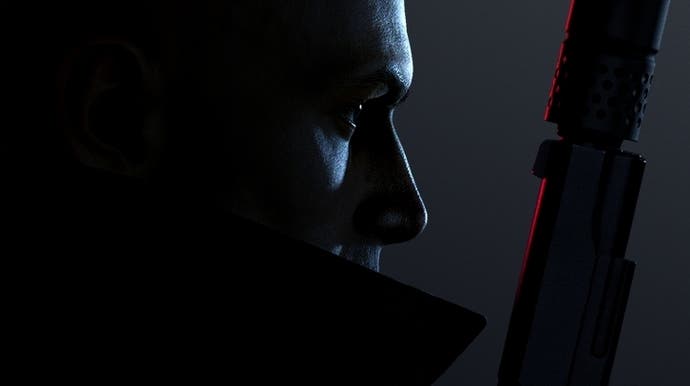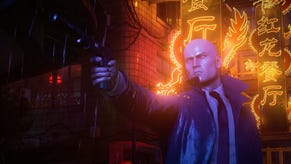Hitman 3 review - a satisfying end to a beautiful stealth trilogy
Providential.
Hitman 3 is the final act in Agent 47's struggle against his nemeses at Providence, the illuminati-style collective of crooked politicians, crimelords and corpos introduced at the start of the World of Assassination trilogy back in 2016. I don't care much about that story, with its paint-by-numbers betrayals and toneless briefing sequences: its only virtue is to keep you moving around the globe, from one extravagant playground to another. But much to my surprise, I do care rather a lot about Agent 47, about the strange figure he cuts against the contents of his own world and the wider landscape of videogames.
The big joke of 47, of course, is that you can't miss him. He stands out like, well, a menacing, chalk-white man with a barcode on his head. In the reboot trilogy, you can mingle with NPCs to throw off suspicious guards, and the impression is always of a fridge trying to blend into a flock of sheep - even the Terminator looks more natural in a crowd. Yet somehow, 47 is the ultimate shape-shifter, able to disguise himself as anyone from a celebrity DJ to a noodle chef. IO has wisely refrained from making this ability to fit in more plausible, even as it has pumped up the splendour of Hitman's locations, and the result is an assassination game that is secretly a comedy long before you start dressing up as a butler and whacking people with fish.
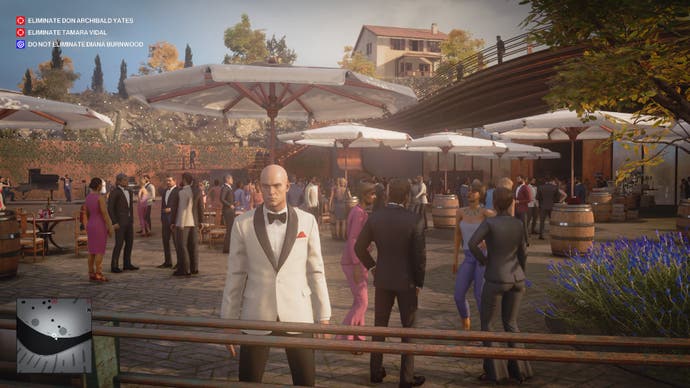
The joke extends to the fact that Agent 47 is somewhat unconvincing as an avatar, or at least, an avatar in a game that occupies the same commercial plateau as Assassin's Creed. He's an old school anomaly carried forward from an era when ledge-mantling was an exotic practice. When he puts on a disguise, the clothes simply teleport from the victim's body to his own. When he stows a corpse, there's a slightly awkward little cutscene. I'm not convinced 47 even obeys the same laws of physics as anybody else in the game. When he's shot, it makes no impression beyond a bit of controller rumble.
All which might sound like I'm having a go at the animation team. Not at all - Agent 47's blunt economy of gesture and reaction are painstakingly crafted, and there's something endearing about this early-noughties stiffness, this lack of flourish in an age when AC protagonists slink through the geometry trailing a boutique's worth of cloth and harness. Questions of development budget aside, Agent 47 doesn't need "seamless" transitions or grounding naturalistic touches any more than he needs a sniper drone or a holographic decoy. What he needs, mostly, is the ability to stand still and an eye for details like poorly secured chandeliers.
Playing as 47 fosters a sense of eerily laidback contemplation that remains unique among stealth sims and as such, makes the absence of new features in Hitman 3 easier to swallow (though not, perhaps, the loss of features like the last game's entertaining Ghosts competitive mode). This is a sturdy third act that creeps along firmly in the footsteps of its predecessors.
Whether you're trying for a main story target, or tackling one of the tougher Escalation hits with additional restrictions, the basic rhythms of the game are the same: choose a starting location and a couple of tools, then try to find your way from public areas through layers of security to your quarry's vicinity, scooping up other tools enroute, and looking out for things you can sabotage. The less noticeable you are, and the more poetic and/or bizarre your methods, the higher your score. Costumes found or taken from NPCs make you undetectable to many onlookers providing you're where you're expected to be and not doing anything odd, like slipping rat poison into somebody's cocktail or meddling with a giant mechanical sun. Agent 47's invisibility is a flexible social metaphor, revealing the presumptions of those nearby. When he poses as an executive on a factory tour, his invisibility is the armour of privilege. When he dresses as a waiter at a sky-high soiree, it's the invisibility of little people in the presence of their betters.
Maps follow a complex running order, with targets moving from spot to spot: the key is working out where they'll be when, or uncovering ways of changing the pattern. The estate owner is well-defended, but perhaps if you cause havoc in the winery downstairs you can lure him into the open. The wandering programmer has a bodyguard, but perhaps you can find a way of tying the latter up while his client gets herself into hot water. Hitman 3 is most rewarding when you disable the handholds and parts of the HUD, attempting to make it through via in-world observation alone, but you'll likely follow proximity-activated Intel prompts and waypoints during your first try. These give you more of a narrative flavour and gently walk you through some fancier ways of nobbling your targets. After three WOA instalments, IO has refined the art of using story missions to introduce the areas and tantalise you with their possibilities. The meat of the game still lies in replaying with different targets and more challenging criteria, but it feels like the studio is having a bit more fun with these opening guided forays.
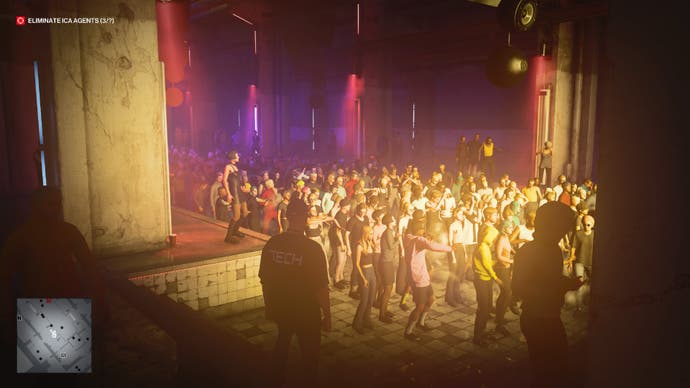
The game's Dartmoor map, for instance, gives you the option of posing as a detective investigating a suspicious suicide, which effectively allows you to stop playing Hitman and experience the whole thing as an Agatha Christie-style whodunnit - asking for alibis, cross-referencing testimonies and tracking down clues, all of it elegantly folded into the existing intel menu system. The map itself is a nice balance of big and intimate, with a core cast of blue-bloods and hard-pressed servants, wandering the endless carpets of a gloomy mansion. Play it without disguising yourself as the detective - which, unlike most outfits, makes you completely undetectable - and it's much more challenging: guards everywhere, no public access as such, and lots of cavernous hallways with little to hide behind.
The six new maps - all set in and around the sanctums of the wealthy - are on par quality-wise with those of Hitman and Hitman 2. The two standouts are probably Berlin and Argentina. The former sees you trying to expose and bump off enemy agents in a huge club built inside a decommissioned power station. There are plenty of backstage areas, elevations and "unfortunate accidents" to choose from, and the ambience is intoxicating - you get a main dancefloor with pyrotechnics-heavy DJ set, scattered chillout cafes and invitation-only drug dens. Argentina, meanwhile, is a sprawling and well-attended retirement party at a sunny estate with its own vineyard and a high-tech winery. It's a sumptuous layer cake: take the main road in and you'll reach a plaza where socialites dance and swap stories about the host. Further in and above, you'll find plush roof gardens and a fortified villa. It's a great fun for snipers, once you've reached the summit, but you'll find you can be just as effective with a pair of shears.
The Dubai skyscraper map has some cool assassination possibilities involving skydiving, and is a stunning assemblage of gold and glass floating against a murky cloudscape. I was less taken by the China map - it's redolent of Sapienza in the first game, with a town environment concealing a huge underground data centre, but there's a little too much emphasis here on sneaking through conveniently man-sized air vents. Hitman is simply more interesting as a social stealth game than when you're lurking in crawlspaces.
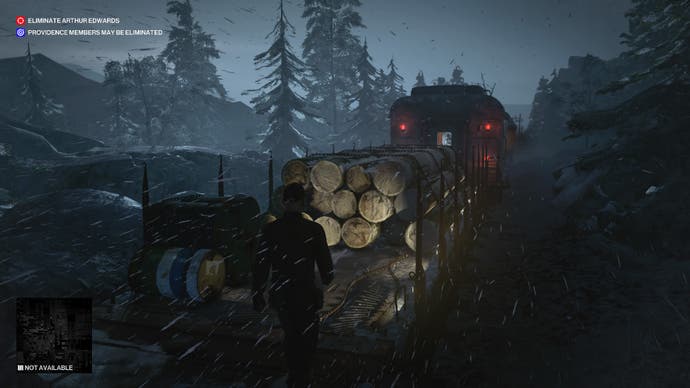
Carpathian Mountains is also a slight disappointment as a final map - it starts you off at the back of a speeding laboratory train and asks you to make your way to the front. The result is undeniably atmospheric but it's obviously rather linear - you're climbing onto the roof or around the outside of cars to get behind guards, and the environmental setups are more pedestrian, almost like optional tactical takedowns in a corridor shooter. That said, I have yet to replay it with different starting locations and targets - I suspect the level is more complex if you begin further up and travel backwards. The linearity is, of course, a thrown gauntlet: how creative can you be in a very confined space?
All the maps are worth revisiting as much for certain deft human moments as the satisfaction of a kill. On Dartmoor, for instance, there's a security guard and a maid who keep trying to chat each other up, breaking off in embarrassment when you appear. You now have a camera which, aside from allowing you to wirelessly hack doorlocks, lets you preserve these moments, some of which are tethered to Challenges. As before, finishing a hit earns you XP towards your map mastery, unlocking new starting locations and tools. If you want to up the ante still further there's the returning Contracts mode, in which you tailor-make a hit for other players by first carrying it out yourself.
The great provocative unfulfilled possibility of the World of Assassination trilogy is that maps don't really respond once you've killed somebody. Guard patrol patterns tighten up, bodies are bagged and removed, and certain bigwigs might flee to saferooms, but the mood and fundamental workings of the space carry on unaltered. I finished off my first Argentina playthrough by shooting a woman with a sniper rifle in full view of a hundred people - when I drifted through the area as a waiter a moment later it was like it had never happened. The nearest you get in Hitman 3 to a kind of map-wide "second act" is in China, where one of the more elaborate killing methods results in a full lockdown that drives half the workforce outside to stand gossiping in the rain.
There are more down-to-earth reasons for this inflexibility - it's hard to implement that kind of change on maps this large, carefully organised and animate without breaking things and adding years to development time. But it also speaks to the plot's rather forlorn theme of a world in which you can punish individuals but never bring down the systems that facilitate their wickedness. "There will always be people like them, so there must also be people like us," is one of Hitman 3's concluding lines. It's meant to sound like a victory. (It certainly leaves room for another sequel.)
All the same, there is something very hopeful about Hitman, an optimism that somehow coexists with its air of absurdity. If these worlds are depraved and ridiculous, full of evil people wallowing in their own crapulence, they are always wobbling around the rim of their own undoing. Behind Agent 47's myriad disguises I sense a faith in the self-defeating logic of the universe, a conviction that if he is patient and watchful, if he only allows himself to move with the flow, the planets will align, the walls will disappear, and for a second or so, the heart of the machine will be exposed for all to see. Just long enough for him to reach out and insert a screwdriver.
